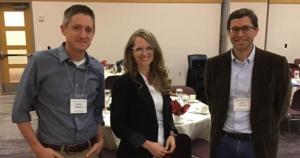Statistics interpret the world we see, and they make the world we know. When we discuss social problems, we measure them by figures purporting to describe how they grow and fall, how they become “epidemics.” Statistics are inevitably cited when we discuss such issues as homelessness, inequality, sexual abuse, harassment, rape, drug abuse, terrorism, or hate crime. Similarly, we measure religious trends through numbers – growing or shrinking congregations, processes of secularization or revival. Much of my career has involved... Read more

















